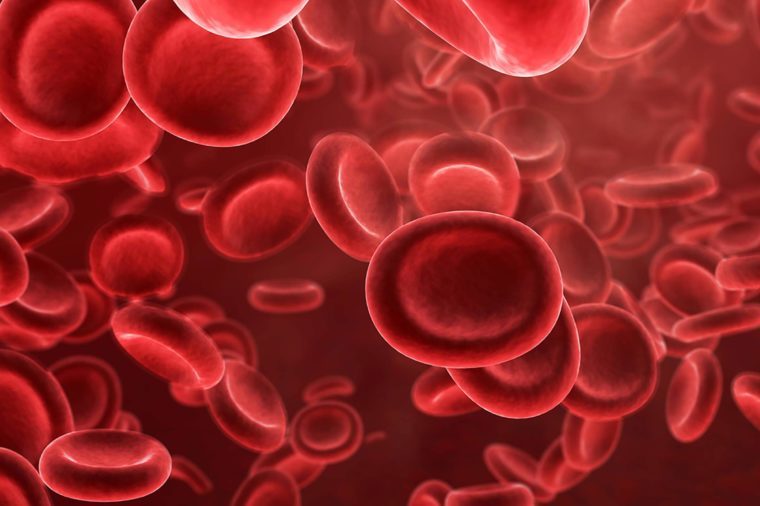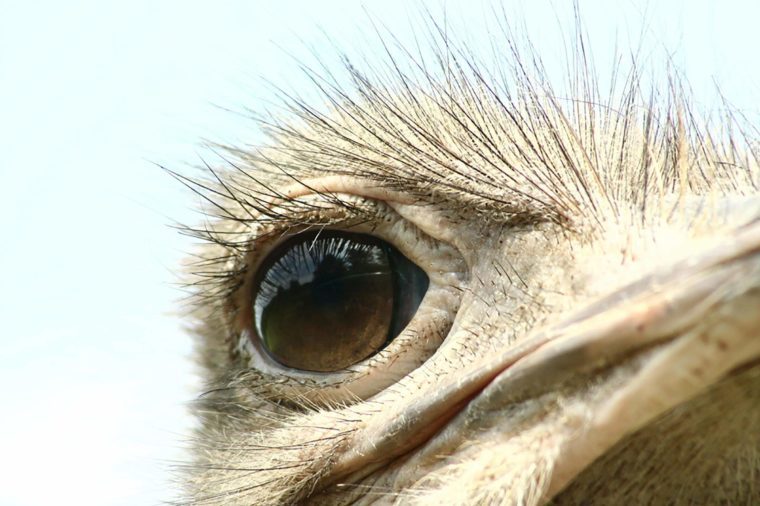- লিঙ্ক পান
- X
- ইমেল
- অন্যান্য অ্যাপ
17 Science “Facts” That Are Actually Not True ( courtecy;- reader's digest )
How many do you still believe?
Myth: Water conducts electricity
 NATALIYA SDOBNIKOVA/SHUTTERSTOCK
NATALIYA SDOBNIKOVA/SHUTTERSTOCKMyth: Blood is blue in your body
 BART SADOWSKI/SHUTTERSTOCK
BART SADOWSKI/SHUTTERSTOCK
A widely shared myth is that blood is blue until it is exposed to air or replenishes its oxygen. Because veins are a greenish blue, that theory sounds reasonable enough. But the fact is, human blood looks the same in your body as outside: red. That hue is brighter when it’s oxygen-rich and darker when it needs that oxygen replenished, but it’s red all the same. The tissue covering your veins affects how the light is absorbed and scattered, which is why the blood circulating your body looks blue. Don't miss these other 50 myths about the human body.
Myth: Dinosaurs were scaly beasts
 BAISHEV/SHUTTERSTOCK
BAISHEV/SHUTTERSTOCK
The giant, scaly lizards you see in Jurassic Park probably don’t look that close to what actual dinosaurs looked like. While scientists are still debating what the oldest and biggest species were covered with, one thing is for sure: At least some had feathers. Velociraptor arm fossils have bumps that look just like the ones keeping modern birds’ wings in place, and bones of a Siberian species discovered in 2014 was surrounded with imprints of feathers. While some scientists argue larger species like the tyrannosaurus rex didn’t need big feathers, others theorize that they had at least some form of light feathering, like how elephants are mammals but don’t have thick fur.
Myth: Humans only use 10 percent of their brains
 LUISMA TAPIA/SHUTTERSTOCK
LUISMA TAPIA/SHUTTERSTOCK
The idea of unlocking hidden brain power might make a compelling storyline for a movie, but it simply wouldn’t happen in real life. One fact playing into the myth is that 90 percent of brain cells are “white matter” that help neurons survive, and only ten percent is the “grey matter” of neurons in charge of thinking. But that white matter could never be used for brain power, so claiming 90 percent of our brain is wasted is like saying you waste peanuts when you throw out the shells. Any fMRI scan will show you that even saying a few words lights up way more than ten percent of your brain. Scientists haven’t uncovered any area of the brain (much less 90 percent) that doesn’t affect thought, movement, or emotion in some capacity. Check out these other 55 health myths that won't go away.
Myth: The Great Wall of China is the only man-made structure you can see from the moon
 WUTTICHOK PANICHIWARAPUN/SHUTTERSTOCK
WUTTICHOK PANICHIWARAPUN/SHUTTERSTOCKMyth: Chameleons change color to match their surroundings
 ANNA OM/SHUTTERSTOCK
ANNA OM/SHUTTERSTOCK
Yes, chameleons can change color by stretching and relaxing cells that contain crystals, which affects how the light is reflected. They can’t change into any color to match their surroundings, though, and their color changes don’t have much to do with camouflage. Instead, chameleons use the crystals mainly for communication (dark colors signal aggression, like when a female doesn’t want to mate), but also temperature control (lighter colors reflect the heat). Those changes aren’t directly used for camouflage, though—just the opposite, in fact. The dull brown and green “resting colors” of chameleons blend in with their surroundings until they switch it up. Other animals are masters at hiding, too—can you spot the animals camouflaged in these photos?
Myth: Neanderthals were a less evolved human ancestor
 PROCY/SHUTTERSTOCK
PROCY/SHUTTERSTOCK
First of all, let’s get one thing straight: Neanderthals aren’t ancestors to modern humans. The two species lived at the same time, mostly in different areas of the globe. When the species did cross paths, there’s even evidence that they interbred. But evidence doesn’t suggest they were cognitively inferior to humans. Fossils show Neanderthals made tools, used fire, cleaned their teeth, ate medicinal plants, buried their dead, and maybe even cared for their sick and wounded. Scientists no longer think Homo sapiens wiped out their Neanderthal cousins. Neanderthals likely were already dying out as the climate changed, while modern humans’ trade networks, diverse diets, and innovative tools helped them survive.
Myth: Earth is the only planet with water
 TRIALHUNI/SHUTTERSTOCK
TRIALHUNI/SHUTTERSTOCKMyth: It takes seven years to digest chewing gum
 IURII STEPANOV/SHUTTERSTOCK
IURII STEPANOV/SHUTTERSTOCK
Don’t freak out if you can’t find a trashcan and need to swallow your gum. The truth is that your body can’t digest gum, not even in seven years. That doesn’t mean it sticks inside your system, though. It will pass through your digestive system without being broken down, then come out in the bathroom like anything else. If kids swallow too much, the gum could block their intestines, but that’s extremely rare. Don't miss these other 21 common food myths you need to stop believing.
Myth: Goldfish have three-second memories
 LAMYAI/SHUTTERSTOCK
LAMYAI/SHUTTERSTOCK
Fish are smarter than you thought. One study found the freshwater fish African Cichlids could remember the feeding zone of an aquarium after moving to a different tank for 12 days. Lest you think goldfish are any different, another study looked specifically at goldfish and whether they could tell the difference between two different classical songs. They weren’t quick learners, but after more than 100 sessions, the fish would bite a bead associated with the correct song 75 percent of the time. If their memories were really three seconds, that kind of training wouldn’t be possible. Find out why we're so likely to remember (and repeat) false information.
Myth: A penny dropped from the Empire State building could kill
 NIXX-PHOTOGRAPHY/SHUTTERSTOCK
NIXX-PHOTOGRAPHY/SHUTTERSTOCKMyth: Ostriches bury their heads in the sand
 ALEKSANDRA DUDA/SHUTTERSTOCK
ALEKSANDRA DUDA/SHUTTERSTOCK
The birds would die of suffocation if they actually stuck their heads underground when scared. Instead, they actually lie with their head and neck flat against the ground if a predator is approaching. Their light-colored head and neck blend in with the ground, which could explain why people assumed their heads were underground from faraway, according to the San Diego Zoo. For more animal facts, check out the 12 of the smartest species on the planet.
Myth: Opossums sleep hanging by their tails
 RTHOMA/SHUTTERSTOCK
RTHOMA/SHUTTERSTOCK
You’ve probably seen cartoons—maybe even photos—of opossums lounging upside-down from their tails. While opossum tails are strong enough to grasp branches and even hold the animals’ weight for a short period, adults are too heavy for their tails to support them for long, so they can’t stay like that while sleeping.
Myth: Sugar makes kids hyper
 MAX LASHCHEUSKI/SHUTTERSTOCK
MAX LASHCHEUSKI/SHUTTERSTOCKMyth: Lightning never strikes the same place twice
 VISUAL GENERATION/SHUTTERSTOCK
VISUAL GENERATION/SHUTTERSTOCK
Anyone familiar with lightning rods could probably already tell you there’s nothing stopping lightning from hitting the same spot twice. The Empire State Building, for example, once endured eight strikes in 24 minutes during a storm. Even without a lightning rod, there’s nothing keeping lightning away from the spot that just got hit. In fact, the features that made the spot likely to get hit once—height, presence of standing water, or terrain shape, for example—would be just as attractive to a second bolt, according to the National Severe Storms Laboratory. Learn how you can stay safe in a lightning storm.
Myth: Common belief in the Middle Ages was the Earth was flat, but it’s really a perfect sphere
 SOLARSEVEN/SHUTTERSTOCK
SOLARSEVEN/SHUTTERSTOCK
Surprise! Both parts of this myth are false. Scholars have known the Earth is round for thousands of years. Greek philosopher first suggested the idea around 500 B.C., though his thought process had to do with the fact that he thought spheres were the most perfect shape. Still, Aristotle actually found physical evidence backing up his predecessor’s theory. By the time the first century A.D. rolled around, any educated Greek or Roman believed in a round planet. When Christopher Columbus took on his voyage, the fear was that the oceans would be too big, not that he’d fall off the face of the earth. In perhaps the biggest twist, though, Earth isn’t a perfect sphere; the North and South Poles are flattened slightly. Don't miss these other 18 lessons your history teacher lied about.
CONTENT CONTINUES BELOW AD
Myth: Genes determine race
 ROST9/SHUTTERSTOCK
ROST9/SHUTTERSTOCK- লিঙ্ক পান
- X
- ইমেল
- অন্যান্য অ্যাপ
মন্তব্যসমূহ
একটি মন্তব্য পোস্ট করুন